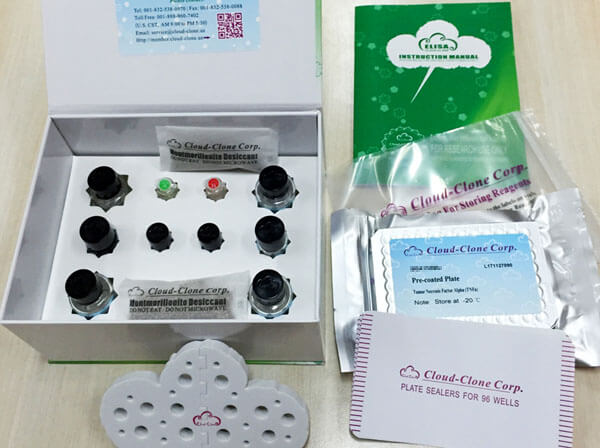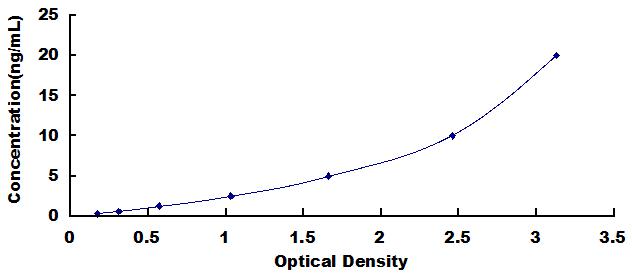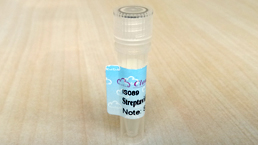ELISA Kit for Thrombin/Antithrombin Complex (TAT) 

- UOM
- FOB US$ 479.00 US$ 684.00 US$ 3,078.00 US$ 5,814.00 US$ 47,880.00
- Quantity
Overview
Properties
- Product No.SEA831Ra
- Organism SpeciesRattus norvegicus (Rat) Same name, Different species.
- ApplicationsEnzyme-linked immunosorbent assay for Antigen Detection.
Research use only - DownloadInstruction Manual
- CategorySignal transductionEnzyme & KinaseMetabolic pathwayHematology
Sign into your account
Share a new citation as an author
Upload your experimental result
Review

Contact us
Please fill in the blank.
Recovery
Matrices listed below were spiked with certain level of recombinant Thrombin/Antithrombin Complex (TAT) and the recovery rates were calculated by comparing the measured value to the expected amount of Thrombin/Antithrombin Complex (TAT) in samples.
| Matrix | Recovery range (%) | Average(%) |
| sodium citrate plasma(n=5) | 98-105 | 102 |
Precision
Intra-assay Precision (Precision within an assay): 3 samples with low, middle and high level Thrombin/Antithrombin Complex (TAT) were tested 20 times on one plate, respectively.
Inter-assay Precision (Precision between assays): 3 samples with low, middle and high level Thrombin/Antithrombin Complex (TAT) were tested on 3 different plates, 8 replicates in each plate.
CV(%) = SD/meanX100
Intra-Assay: CV<10%
Inter-Assay: CV<12%
Linearity
The linearity of the kit was assayed by testing samples spiked with appropriate concentration of Thrombin/Antithrombin Complex (TAT) and their serial dilutions. The results were demonstrated by the percentage of calculated concentration to the expected.
| Sample | 1:2 | 1:4 | 1:8 | 1:16 |
| sodium citrate plasma(n=5) | 80-96% | 81-88% | 84-98% | 87-101% |
Stability
The stability of kit is determined by the loss rate of activity. The loss rate of this kit is less than 5% within the expiration date under appropriate storage condition.
To minimize extra influence on the performance, operation procedures and lab conditions, especially room temperature, air humidity, incubator temperature should be strictly controlled. It is also strongly suggested that the whole assay is performed by the same operator from the beginning to the end.
Reagents and materials provided
| Reagents | Quantity | Reagents | Quantity |
| Pre-coated, ready to use 96-well strip plate | 1 | Plate sealer for 96 wells | 4 |
| Standard | 2 | Standard Diluent | 1×20mL |
| Detection Reagent A | 1×120µL | Assay Diluent A | 1×12mL |
| Detection Reagent B | 1×120µL | Assay Diluent B | 1×12mL |
| TMB Substrate | 1×9mL | Stop Solution | 1×6mL |
| Wash Buffer (30 × concentrate) | 1×20mL | Instruction manual | 1 |
Assay procedure summary
1. Prepare all reagents, samples and standards;
2. Add 100µL standard or sample to each well. Incubate 1 hours at 37°C;
3. Aspirate and add 100µL prepared Detection Reagent A. Incubate 1 hour at 37°C;
4. Aspirate and wash 3 times;
5. Add 100µL prepared Detection Reagent B. Incubate 30 minutes at 37°C;
6. Aspirate and wash 5 times;
7. Add 90µL Substrate Solution. Incubate 10-20 minutes at 37°C;
8. Add 50µL Stop Solution. Read at 450nm immediately.

Test principle
The microtiter plate provided in this kit has been pre-coated with an antibody specific to thrombin. Standards or samples are then added to the appropriate microtiter plate wells with a biotin-conjugated antibody specific to ATIII. Next, Avidin conjugated to Horseradish Peroxidase (HRP) is added to each microplate well and incubated. After TMB substrate solution is added, only those wells that contain TAT, biotin-conjugated antibody and enzyme-conjugated Avidin will exhibit a change in color. The enzyme-substrate reaction is terminated by the addition of sulphuric acid solution and the color change is measured spectrophotometrically at a wavelength of 450nm ± 10nm. The concentration of TAT in the samples is then determined by comparing the O.D. of the samples to the standard curve.
Giveaways
Increment services
Citations
- Genetic repression of mouse VEGF expression regulates coagulation cascade.PubMed: 21086498
- Treatment with unfractionated heparin attenuates coagulation and inflammation in endotoxemic miceScienceDirect: S0049384811004166
- High sCD40L levels early after trauma are associated with enhanced shock, sympathoadrenal activation, tissue and endothelial damage, coagulopathy and mortalityWiley: source
- Tissue factor and PAR1 promote microbiota-induced intestinal vascular remodellingNature: 20120329
- Prolonged Exposure to Sphingosine 1–Phosphate Receptor-1 Agonists Exacerbates Vascular Leak, Fibrosis, and Mortality after Lung InjuryPubMed: PMC2993087
- Host Defense Peptides of Thrombin Modulate Inflammation and Coagulation in Endotoxin-Mediated Shock and Pseudomonas aeruginosa SepsisPubMed: PMC3521733
- Clinical impact of factor V Leiden, prothrombin G20210A, and MTHFR C677T mutations among sickle cell disease patients of Central IndiaPubmed: 23992124
- Selected hemostatic parameters in patients with pancreatic tumors.Pubmed:Pmc4297344
- TFPI1 Mediates Resistance to Doxorubicin in Breast Cancer Cells by Inducing a Hypoxic-Like ResponsePubmed:24489651
- Novel evidence that crosstalk between the complement, coagulation and fibrinolysis proteolytic cascades is involved in mobilization of hematopoietic stem/progenitor cells (HSPCs)Pubmed:24667943
- Thrombomodulin Improved Liver Injury, Coagulopathy, and Mortality in an Experimental Heatstroke Model in MicePubmed:24781566
- Evidence of a Pivotal Role for the Distal Part of the Complement Cascade in the Diurnal Release of Hematopoietic Stem Cells Into Peripheral BloodPubmed:26087465
- (S)YS-51, a novel isoquinoline alkaloid, attenuates obesity-associated non-alcoholic fatty liver disease in mice by suppressing lipogenesis, inflammation and coaCavia (Guinea pig )lationPubmed:27343380
- Coagulation factor XI vaccination: an alternative strategy to prevent thrombosis.pubmed:27813324
- Nebulized Heparin Attenuates Pulmonary Coagulopathy and Inflammation through Alveolar Macrophages in a Rat Model of Acute Lung Injurypubmed:29202212
- Platelet-localized FXI promotes a vascular coagulation-inflammatory circuit in arterial hypertensionpubmed:28148841
- Activated TAFI Promotes the Development of Chronic Thromboembolic Pulmonary Hypertension: A Possible Novel Therapeutic Targetpubmed:28289017
- Nebulized anti-coagulants as a therapy for acute lung injury and acute respiratory distress syndromePubmed: 29202212
- The circadian rhythm of selected parameters of the hemostasis system in healthy people
- Transduced Tat-aldose Reductase Protects Hippocampal Neuronal Cells against Oxidative Stress-induced DamagePubmed: 31698553
- The impact of dabigatran treatment on sinusoidal protection against hepatic ischemia‐reperfusion injury in micePubmed: 33108682
- Doxorubicin contributes to thrombus formation and vascular injury via enhancing platelet functions in vivoPubmed: 32469636
- Preservation of renal endothelial integrity and reduction of renal edema by aprotinin does not preserve renal perfusion and function following experimental …34169407
- Complement factor D is linked to platelet activation in human and rodent sepsis34396466















